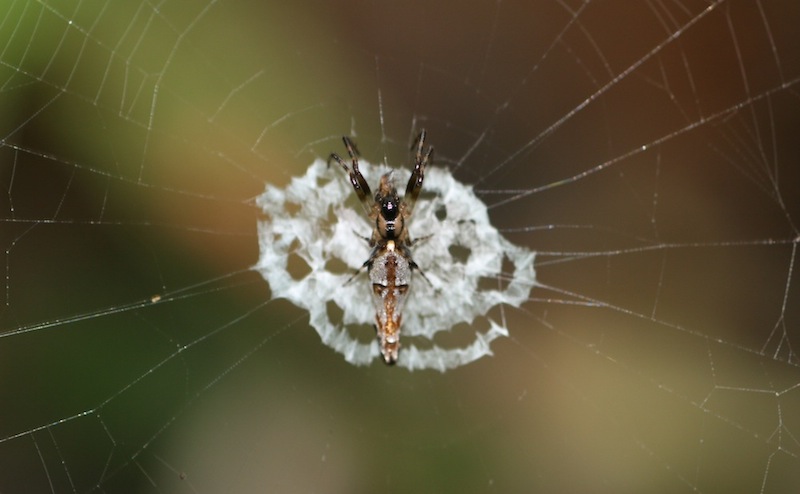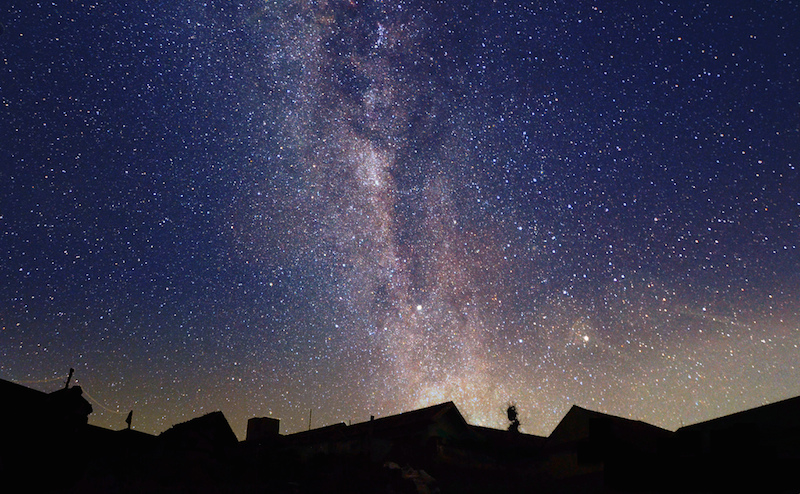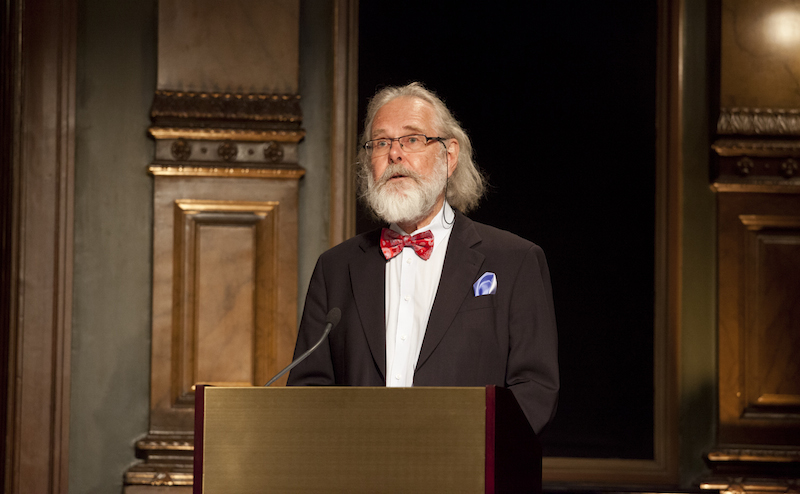Articles
Pie, like all collections of biological material, is subject to physical laws, and thus provides opportunities for insights into biophysics—although most laboratory experiments don’t end up quite so tasty. On Friday evening the Momofuku Milk Bar in Williamsburg, Brooklyn hosted an exploration of the science of pie-making at the 2014 World Science Festival program Biophysics? More Like PIE-O-Physics! Biophysicist Amy Rowat, Milk Bar founder Christina Tosi, and White House pastry chef Bill Yosses were all on hand to explain the chemical and biophysical principles that turn flour, water, fat, filling and heat into a delectable pie. Pie crust begins with flour, which consists of starch (sugars) and protein molecules. When water is added, it rearranges the molecules in the flour to “form a network of proteins, like springs, between the molecules of starch,” Rowat said. This network, called gluten, provides structure and mechanical stability to the dough. Guests got to experience the flavor and texture of gluten firsthand by trying the Milk Bar’s pie crust crumbs, which they incorporate into layer cakes and other desserts. (They were buttery, flaky, and held a satisfying mixture of sweet and salty in every crunchy bite.) Next came the biophysics of pie filling. It …
Read MoreMapping brain regions is starting to allow us to restore lost movement to the paralyzed and grant limited amounts of sight to the blind (lab mice, that is). But will scientists be able to go even further in coming decades, allowing us to upgrade, copy, or even move our brains around to other substrates besides a meat puppet with a shelf life of about 100 years, at best? These and other far-off future concepts took center stage in the program Cells To Silicon: Your Brain in 2050, part of the Big Ideas Series at the 2014 World Science Festival. “Tonight we can dream a little bit,” moderator and NPR journalist Robert Krulwich said in his introduction. “Science invites crazy dreams.” Welding a brain to a machine is what allowed Cathy Hutchinson—who was left completely paralyzed by a brain stem stroke—to take her first drink of coffee under her own power in more than a decade. Hutchinson raised the water bottle full of java to her own lips with a brain-linked robotic arm developed by Cells to Silicon panelist and Brown University researcher John Donoghue: The arm is linked via wires to a hairbrush-shaped brain implant about the size of an …
Read MoreDrinking like our ancestors tastes pretty good, it turns out. On Thursday night at the Wythe Hotel in Brooklyn, biomolecular archaeologist Patrick McGovern and Dogfish Head Craft Brewery founder Sam Calagione led a beer tasting that doubled as a tour through the history and science of fermented beverages in Cheers To Science, a program of the 2014 World Science Festival. Calagione and McGovern’s business partnership is a marriage of art and science; McGovern brings his biomolecular and chemical expertise to bear, while Calagione provides the brewing and flavor selection skills. Together, the two have attempted to recreate some of the most ancient ales known to mankind.
Read More
Seven days; lots of science in the news. Here’s our roundup of this week’s most notable and quotable items!
Read MoreThe next time you’re out stargazing, you might want to have some knowledge handy to sate the curiosity of your kids, impress a date, or just for your own edification. Here are 8 stellar tidbits to keep in mind when you’re not peering through a telescope or searching for meteors: 1) Where is the zodiac? The zodiac is a band of 12 constellations lying along the ecliptic, which is the apparent path of the sun through the sky. To envision the ecliptic, think of a line running straight from the earth, through the sun and out into space. As Earth circles the sun, this imaginary line will rotate through space and point to different constellations. Traditionally, we’ve divided the zodiac into 12 constellations, with the sun passing through about one every month: Capricornus, the goat; Aquarius, the water-bearer; Pisces, the fish; Aries, the ram; Taurus, the bull; Gemini, the twins; Cancer, the crab; Leo, the lion; Virgo, the virgin; Libra, the scales; Scorpius, the scorpion; and Sagittarius, the centaur. The sun also seems to pass through a 13th constellation, Ophiuchus, the snake-bearer, which is sometimes included amongst the signs of the zodiac. The dates given for the signs of the …
Read MoreScientists who developed the theory of cosmic inflation, pushed the limits of microscopy, and discovered brain networks devoted to memory and cognition received top honors at this year’s Kavli Prizes. Awarded once every two years, the Kavli Prizes offer $1 million, a gold medal, and a scroll to exceptional researchers in astrophysics, nanoscience, and neuroscience—those who work to unravel the natures of big, small, and complex forces around us. This year’s winners were announced on Thursday, May 29 in Oslo, Norway and simulcasted at the 2014 World Science Festival. Alan Guth (Massachusetts Institute of Technology), Andrei Linde (Stanford University) and Alexei Starobinsky (Landau Institute for Theoretical Physics) won the 2014 Kavli Prize in astrophysics for their work in formulating the theory that the universe exponentially expanded in the first fraction of a second after the Big Bang. “When I first came up with the idea, I was extremely nervous that it would be wrong in some obvious way,” Guth, who was in attendance at the Festival’s Kavli Breakfast, said. “Fortunately, it didn’t fall apart.” The 2014 Kavli Breakfast Linde, whose work has focused on the possibility of multiple Big Bangs occurring, giving rise to a many-faceted multiverse, told the Kavli …
Read More













